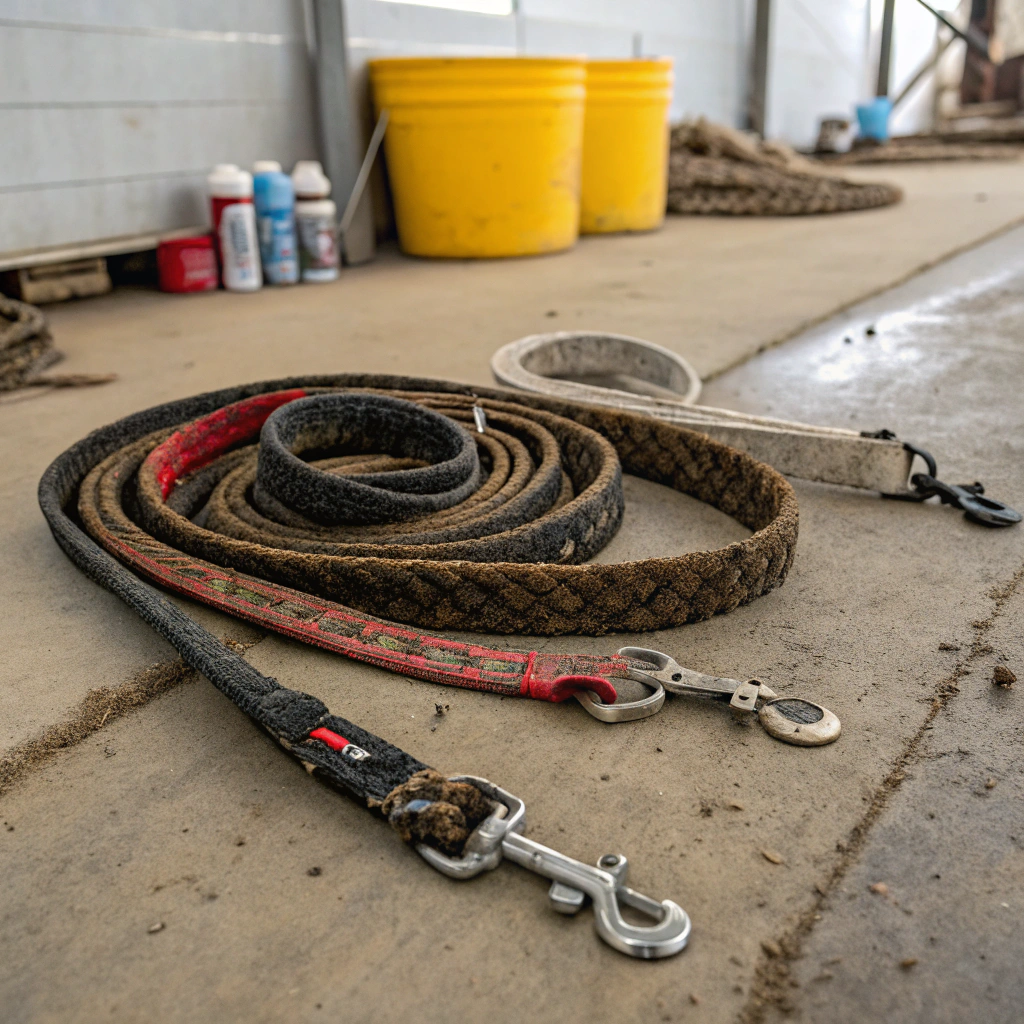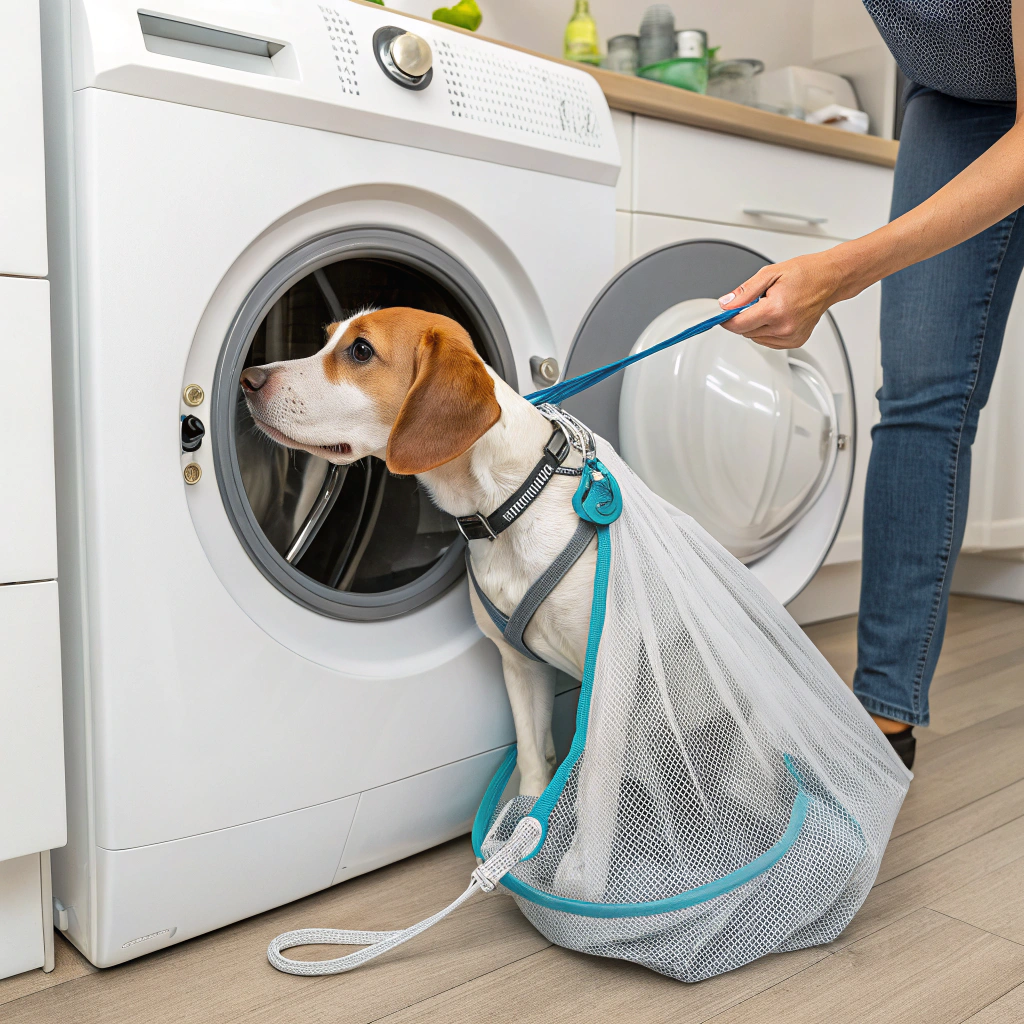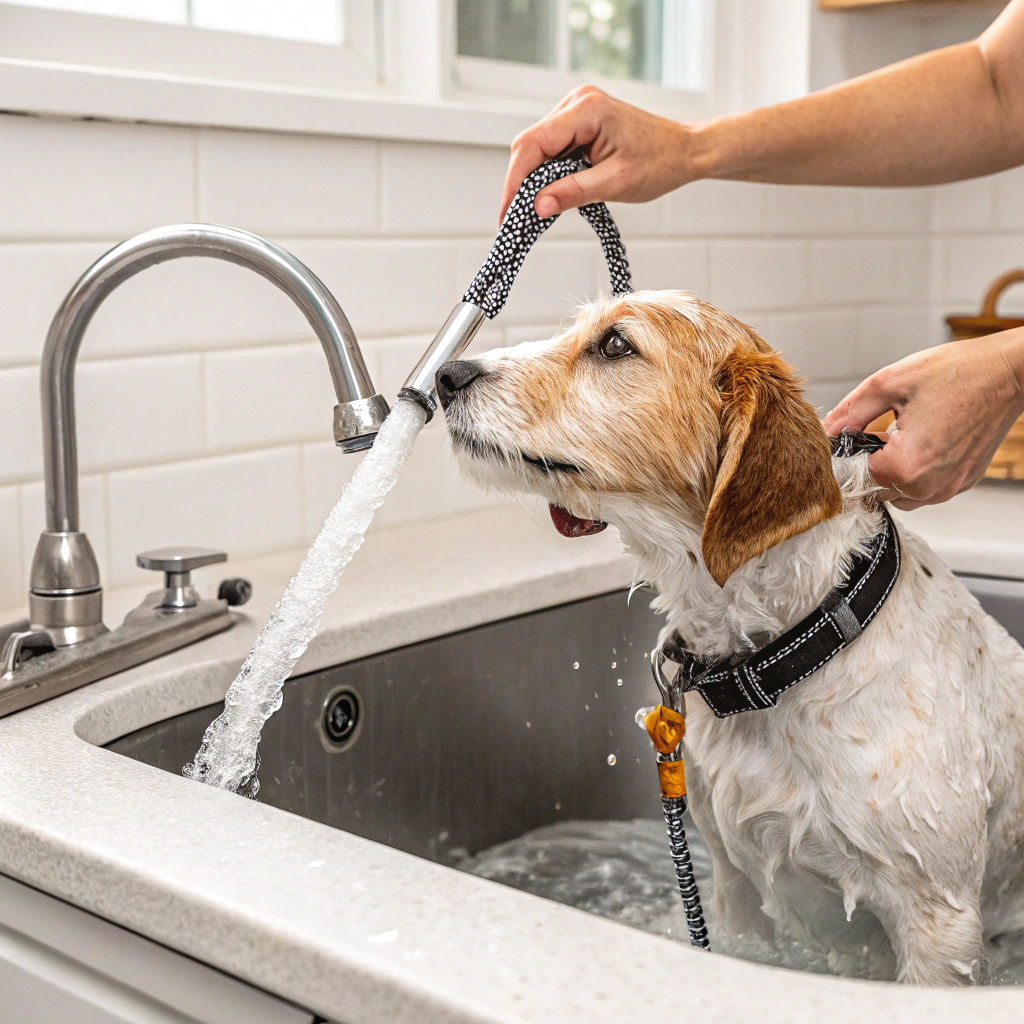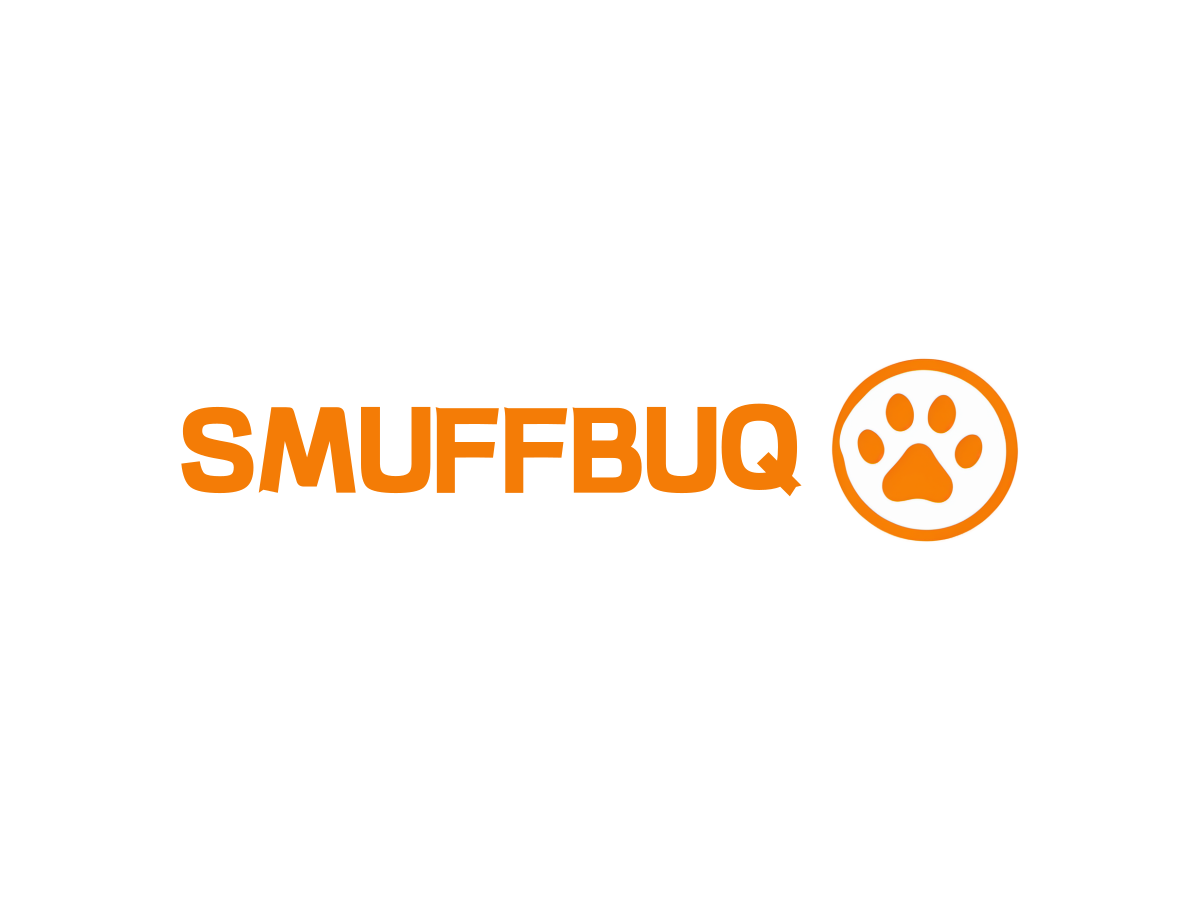Can Dog Leashes Be Washed?
Dog leashes accumulate dirt, bacteria, and odors over time, making walks unpleasant and potentially unhygienic. Many pet owners aren’t sure if washing will damage their leashes or how to properly clean these essential accessories.
**Yes, most dog leashes can be washed, but the appropriate cleaning method depends on the material. Nylon and polyester leashes can typically be machine-washed, leather requires special conditioning, and metal chains need different Yes, most dog leashes1 can be washed, but the appropriate cleaning method depends on the material. Nylon and polyester leashes can typically be machine-washed, leather requires special conditioning, and metal chains need different cleaning techniques to prevent damage and maintain functionality

Through my years working with pet product manufacturers and as a dog owner myself, I’ve learned that proper leash maintenance significantly extends its lifespan. Let me share what I’ve discovered about safely cleaning different types of leashes without compromising their strength or appearance.
Can I Put Dog Leash in the Washer?
When my dog’s nylon leash became caked with mud after a particularly messy hike, I wondered if tossing it in the washing machine would damage it or compromise its strength.
**You can machine washYou can machine wash synthetic leashes made of nylon or polyester1, but leather, chain, or leashes with special features should never go in the washer

Having toured manufacturing facilities where dog leashes are produced, I’ve gained insight into how different materials respond to washing methods. The manufacturing process for synthetic leashes often includes heat-setting and chemical treatments that make them relatively washing machine friendly, but there are important precautions to take.
Machine Washing Guidelines for Different Leash Materials
Based on my experience with product testing and material properties, here’s a comprehensive breakdown of which leashes can safely go in the washing machine:
| Leash Material | Machine Washable? | Special Considerations |
|---|---|---|
| Standard Nylon | Yes | Use cold water, gentle cycle |
| Polyester | Yes | Use cold water, gentle cycle |
| Reflective Nylon | Yes, with care | May reduce reflective properties over time |
| Leather | No | Water damages leather structure |
| Biothane | Yes | Highly washing machine resistant |
| Chain | No | Can damage machine and other items |
| Rope | Yes, with care | May cause slight fraying |
| Cotton/Hemp | Yes | May shrink slightly |
| Retractable (housing) | No | Electronic components will be damaged |
During a product development consultation for a pet accessories company, I advised them on material selection specifically for washability. The key factor we considered was how water absorption and agitation affect the structural integrity of different fibers.
Standard nylon and polyester leashes maintain approximately 90-95% of their strength when properly machine washed, making them excellent choices for Standard nylon and polyester leashes1 maintain approximately 90-95% of their strength when properly machine washed, making them excellent choices for washable leashes
-
Remove Hardware When Possible: Metal clips, adjustment buckles, and D-rings can damage both your washing machine and the leash itself. Some designs allow you to detach these components before washing.
-
Use a Mesh Laundry Bag: This prevents the leash from wrapping around other items or getting caught in the washing machine’s drum. I learned this the hard way when an unwrapped leash tangled around my washing machine’s agitator.
-
Choose Gentle Cycle with Cold Water: Hot water and aggressive cycles can weaken synthetic fibers over time. Cold water and gentle agitation minimize this risk.
-
Mild Detergent Only: Harsh chemicals, bleach, or fabric softeners can break down the materials or leave residues that might irritate your dog’s skin.
-
Air Dry Completely: Machine drying generates heat that can warp or weaken synthetic materials. I always hang leashes to dry naturally, which typically takes 4-6 hours depending on humidity levels.
For retractable leashes, only the extended tape/cord portion can potentially be cleaned in a washing machine (after careful detachment from the handle), but I generally don’t recommend this approach due to the risk of weakening the material where it connects to the retraction mechanism.
How Do I Clean My Dog’s Leash?
After my dog rolled in something unmentionable during a walk, I realized I needed multiple cleaning methods for different situations – from quick refreshes to deep cleaning heavily soiled leashes.
To clean a dog leash, first identify the material. For nylon/polyester, handwash with mild soap or machine wash in a mesh bag. For leather, wipe with a damp cloth and apply leather conditioner. Metal chains can be soaked in vinegar solution, while specialty materials like biothane simply need soap and water.

Through my manufacturing experience, I’ve learned that cleaning methods must be tailored to specific materials to preserve both appearance and functionality. Let me share detailed cleaning approaches for each leash type based on both material science and practical experience.
Cleaning Methods for Different Leash Materials
Nylon and Polyester Leashes
For everyday cleaning of synthetic leashes, I use this hand-washing method:
- Fill a basin with lukewarm water and add a small amount of mild detergent
- Submerge the leash and gently agitate to loosen dirt
- For stubborn stains, use a soft brush (an old toothbrush works well)
- Rinse thoroughly with clean water
- Squeeze out excess water (don’t wring or twist)
- Hang to air dry away from direct sunlight
For heavily soiled synthetic leashes, machine washing as described in the previous section is more effective. From testing dozens of leashes, I’ve found that nylon and polyester can typically withstand 20-30 machine wash cycles before showing signs of wear if proper precautions are taken.
Leather Leashes
Leather requires special care to maintain its suppleness and strength:
- Wipe with a barely damp cloth to remove surface dirt
- For tougher grime, use a leather cleaner specifically formulated for pet products (avoiding harsh chemicals)
- Allow to dry naturally away from heat sources
- Apply a small amount of leather conditioner once dry
- Buff with a clean, dry cloth
I learned the importance of conditioning after my first leather leash dried out and cracked. Now I clean and condition my leather leashes every 1-2 months, which has kept them supple and strong for years.
Biothane and Waterproof Synthetic Leashes
These modern materials offer superior cleaning ease:
- Wash with warm, soapy water
- Rinse thoroughly
- Wipe dry with a clean towel
During product development for waterproof leashes, we specifically tested biothane’s response to repeated cleaning. The material showed virtually no degradation even after simulating years of regular washing, making it an excellent choice for dogs who frequently get dirty.
Chain Leashes
Metal chains require different treatment:
- Create a solution of equal parts white vinegar and water
- Soak the chain for 15-20 minutes
- Scrub with a brush if needed
- Rinse thoroughly with clean water
- Dry completely with a towel
- Apply a tiny amount of food-grade mineral oil if the chain shows any signs of rust
Rope Leashes
Climbing rope-style leashes need gentle handling:
- Brush off loose dirt with a soft brush
- Hand wash in cold water with mild detergent
- Rinse thoroughly
- Press between towels to remove excess water
- Air dry completely before use
Through testing different cleaning methods on various materials, I’ve found that proper cleaning actually extends a Through testing different cleaning methods1 on various materials, I’ve found that proper cleaning actually extends a leash’s lifespan by preventing dirt and oils from degrading the fibers over time
How Often Should You Wash a Dog Leash?
I used to rarely clean my dog’s leash until a veterinarian friend pointed out the bacteria buildup. Now I follow a regular cleaning schedule tailored to our activity level and leash material.
Dog leashes should be cleaned every 2-4 weeks with regular use, immediately after exposure to mud or contaminants, and whenever they develop an odor. High-activity dogs or those walking in dirty environments may require weekly cleaning, while indoor or light-use leashes can go longer between washes.

My experience with product testing has shown that cleaning frequency significantly impacts both hygiene and durability. While under-cleaning allows dirt and bacteria to accumulate, over-cleaning some materials (particularly leather) can lead to premature deterioration.
Creating an Optimal Leash Cleaning Schedule
Through my years working with pet products and managing my own dogs’ equipment, I’ve developed guidelines for cleaning frequency based on different scenarios:
Factors Affecting Cleaning Frequency
- Usage Environment: Urban sidewalks versus muddy trails or beaches
- Weather Conditions: Rainy, snowy, or dusty conditions accelerate soiling
- Dog Behavior: Dogs who frequently roll in dirt or swim require more frequent leash cleaning
- Leash Material: Some materials show soil more easily or harbor more bacteria
- Health Considerations: Households with immunocompromised people or multiple pets may benefit from more frequent cleaning
Recommended Cleaning Schedule by Scenario
| Scenario | Cleaning Frequency | Reasoning |
|---|---|---|
| Standard urban walks | Every 2-4 weeks | Regular dirt accumulation from sidewalks and grass |
| Hiking/trail use | After each significant outing | Exposure to mud, plant matter, and potential parasites |
| Beach walks | After each visit | Salt and sand cause accelerated wear if not removed |
| Multiple dog household | Weekly | Cross-contamination between pets increases bacteria levels |
| Dog in training | Every 1-2 weeks | More handling of the leash transfers more oils and dirt |
| Post-veterinary visits | Immediately after | Potential exposure to sick animals |
| Exposure to contaminants | Immediately after | Feces, dead animals, chemicals require immediate cleaning |
During a product testing phase for a new leash design, we conducted During a product testing phase for a new leash design1, we conducted bacterial testing on leashes used for different durations without cleaning
Beyond hygiene considerations, regular cleaning affects durability. For synthetic leashes, dirt particles work between fibers during flexing, causing internal abrasion that weakens the material over time. In our accelerated wear testing, cleaned leashes consistently outlasted uncleaned ones by 30-40% when subjected to the same mechanical stress.
For my personal leashes, I keep a simple cleaning log with the leash storage area, marking the last cleaning date. This system ensures I don’t forget regular maintenance while avoiding over-cleaning materials like leather that can deteriorate with excessive washing.
I also recommend having at least two leashes in rotation, allowing each one to fully dry after cleaning before being used again. This practice not only extends leash life but ensures you always have a clean option available.
Conclusion
Most dog leashes can be safely washed using material-appropriate methods—synthetic leashes can typically be machine washed in a protective bag, while leather requires special care with conditioning to maintain strength and flexibility.
-
Exploring leash design trends can inspire innovative ideas for your own products and improve user experience.
on leashes used for different durations without cleaning. The results were eye-opening—after just two weeks of regular use, leashes showed significant bacterial colonies, with the handle area being particularly concerning due to constant hand contact. ↩ ↩ ↩ ↩ ↩

